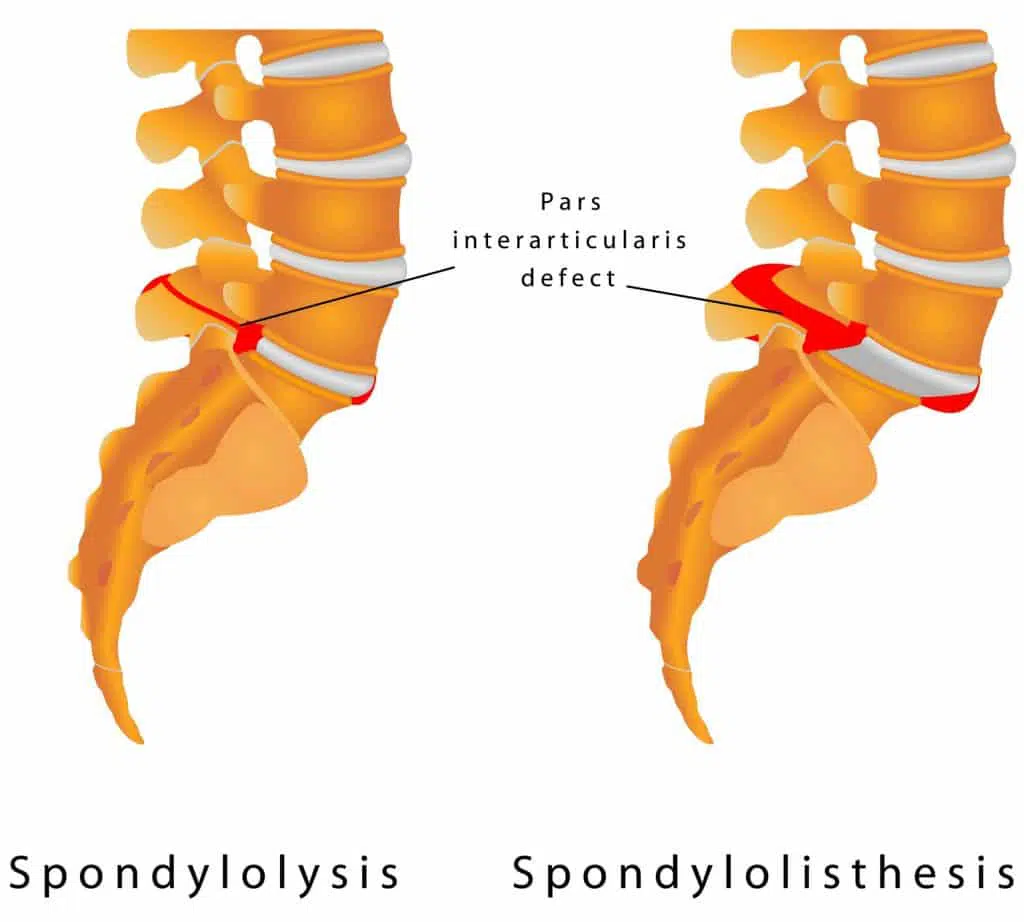
Spondylolisthesis
Spondylolisthesis is a condition in which one of your spine's bones (the vertebrae) slips off its place and shifts on top of the vertebra adjacent to it.
It most commonly occurs at the base of your spine called lumbar spondylolisthesis. When a slipped vertebra compresses a nerve you may experience pain in your lower back or legs.
Overview
Spondylolisthesis derived from Latin meaning "slipped vertebral body " is a condition in which one vertebra slips and moves forward over the one below thus misaligning the spine. Degenerative spondylolisthesis is a common condition caused by degeneration or premature wear and tear of the intervertebral discs and ligaments. Facet joint osteoarthritis can also contribute to the onset of instability and slipping.
Causes
• Ageing- the spine's bones can weaken with age and run in families
• Degeneration
• Sudden injury (acute trauma)
• Congenital defects
• Bone disease and fractures
• Sports such as gymnastics weightlifting football cause hyperextension.
Symptoms
The most common symptoms of spondylolisthesis are back pain that may or may not travel down one or both legs. Even though most patients encounter combined symptoms both symptoms may not exist at the same time. Symptoms can range from insignificant to complete loss of urination and bowel function in severe cases. The intensity of pain varies greatly. Back pain is a predominant symptom in some patients while pain radiating to the leg is the primary symptom in others. A lot of individuals with spondylolisthesis have the following symptoms:
• Lower back pain or stiffness
• Stiff muscles or spasms in the back of the thighs
• Pain numbness or tingling in the buttocks legs and feet.
• Weakness in legs.
• An unusual walking style
Ayurvedic View
Kati shoola -The condition in which kati means spine mainly lumbar spine is affected. Aggravated vata dosha takes sthana (settles) in kati pradesha (spine) and does dushti (vitiation)of asthi vaha srotas (bone and nearby bone supporting structures), causing the change of position of the vertebra, which results in pain, weakness, stiffness and impaired function of the spine of the involved area. Ayurveda's approach is to bring the dosha back to prakruta awastha (balanced state) and rehabilitate the affected part through ayurvedic panchakarma treatment.
Ayurvedic Treatments
Swedanam Kashaya dhara Lepanam Pichu Kativasti Virechanam Vasti Pizhichil Navara pinda swedanam Patra pinda swedanam Pinda swedanam Abhyangam
Naturopathy Treatments
Spinal bath Enema Manipulative therapy Steam bath Mud therapy Packs Reflexology Magnetotherapy Acupuncture Hijama therapy Moxibustion Diet therapy Clinical yoga Dorn
Spondylolisthesis
Treatment for
DISCLAIMER: Listed treatment details are only for information purposes. Treatments and duration may vary depending on numerous factors. Treatments for your condition may not be limited to this list.






















